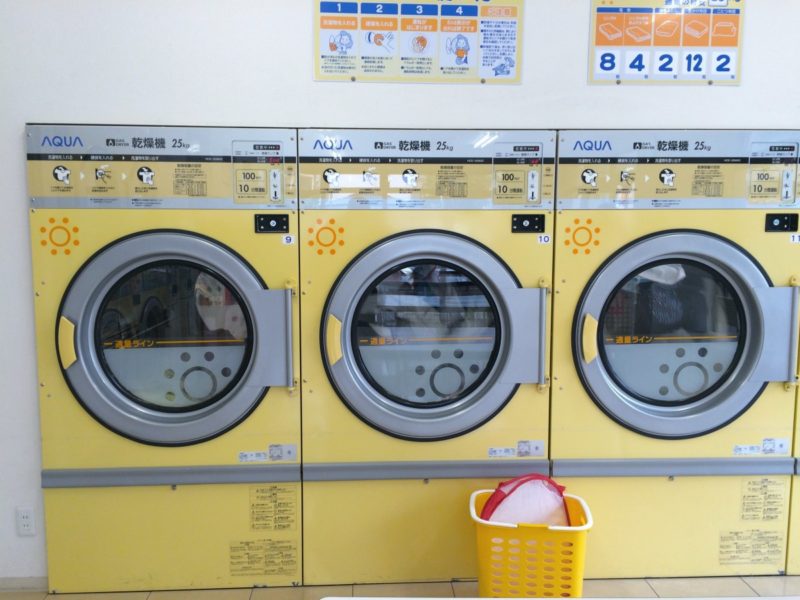This guide will show you what size breaker for dryer? It might seem intimidating to ensure the electrical side of an installation is perfect while installing a new electric cable. Handling power and cables is often a risky proposition, and doing it wrong might lead to your dryer not working correctly or, weirder, an explosion.
The National Electric Code (NEC) requires a minimum of a 30-ampere breaker on such a dedicated circuit for an electric dryer, which operates on 240 voltages.
Electric dryers that run on 220 volts also need 30-ampere breakers, but dryers that run on 110 or 120 voltages only demand 15 -ampere circuit breakers. If you’re not familiar with wiring, the various electric dryer volts and sizes of breakers can be somewhat perplexing. But it’s not that difficult once you disintegrate into digestible chunks, as we’ll do in this article. So without further ado, let’s get started!
Electrical Dryer Wiring And Breaker Requirements
What size of t breaker and wiring you’ll want for an electric dryer is mostly determined by its power requirements. Electric dryers are categorized into three voltages, 110V/120V, 220V/240V, and 220V/240V. There seem to be a few notable outliers. Electric dryers with a voltage of 240 volts are perhaps the most frequent. The majority of electric dryers in American households operate at 240 volts.
Most 220-V equipment is advertised as 240V appliances to make things easier. The only variation in 240vlge to and 220voltage electric dryers is that they both need the exact size breakers and wirings when it comes to wiring.
Dryer circuits with 110V/120-volt are typically used with gas dryers since they require less current. 240V dryers, on the other hand, need either a dryer plug having 3 or 4 prongs, based on the kind of dryer port. The gas dryer’s electronics are powered by the 110V/120V dryers adapter, which connects to a conventional wall socket. Let us just check the breakers and wiring gauge you’ll for an electric clothes dryer, so now we’ve gotten everything out of the question, or you’re completely captured up on the various equipment voltages you’re prone to face.
Wiring Size
It’s critical to utilize the proper size wiring for the dryer circuits when you’ve determined the appropriate size of the breaker for an electric dryer. Install 10/3 American Wire Gauge (AWG) wiring with a 30-amp breaker for 240 volts and 220volts electric dryers. Inside cable 10/3, two heated wires, a ground, and a neutral wire. To decrease the heat generated by the current flowing, it’s advisable to utilize the bigger diameter wire. Electric dryers that connect to wall sockets must be wired using 14- or 12 AWG wiring.
Utilize 14 gauge wiring if the outlet seems to have a 15-ampere circuit. If the outlet contains a 20-ampere circuit, you need to use 12 gauge wire to connect the dryer circuit. You might be asking whether to utilize a 3-prong and 4-prong plug when cabling an electric dryer outlet, which usually is for 240 volts or 220volts equipment—determining which one you can need is straightforward. For a new installation of electrical dryer circuits, only utilize a 4-prong outlet. While older residences may have 3-prong plugs, you can use 3-prong plugs for dryers with 240 volts and 220volts. You may also be interested to know about the type of wire gauge to use for an electric dryer.
Breaker Size
So, what size breaker for dryer? It’s critical to choose an appropriately sized breaker for a dryer. When using an electric dryer, a too-small breaker will keep tripping, and a too strong breaker might be dangerous. Because most electric dryers operate at 240V, a 30-ampere breaker should suffice. Electric dryers that run on 220volt have a lot in common, and they all have the same sized electric circuits breakers to work. Both electric dryers draw Between 10 to 30 amperage. 30-amp double-pole breakers protect 2 breaker spots in the junction box.
A dryer circuit protects electric clothes dryers within the electrical panel. A small dryers breaker can be used for compact 110V/120V electricity clothes dryers. Because these less-powered electric dryers are usually plugged straight into a plug socket, a 20- or 15-ampere breaker should suffice. Such electric dryers use between 7.5 and 15 amperages. To use a reduced amperage branch breaker, such as a 25-ampere breaker, for such a dryer is not a safety issue, but it would most certainly blow the breaker regularly. The dryer will draw more amperage than the breaker can handle, leading the breaker to blow and turn off the electricity altogether.
Breakers With A Higher Current Rating
What will eventuate if you placed a 50-ampere dryer breaker rather than a 30 amp one? You risk triggering an explosion and fire or injuring your electric dryer if you connect almost everything for a 30-ampere dryer circuit but add a bigger breaker. Whenever an overvoltage develops, a bigger amp breaker will not blow, causing the dryer to be irreparably damaged.
It’s A Wrap!
We hope that this guide has helped you determine what size breaker for dryer and the size of the wire. When choosing the size of wire and breaker, your electric dryers require, the facts discussed above and their intricacies might be confusing. Difficult things seem a lot more obvious when you clearly understand this article. Read related articles; know what does a dryer thermistor do and why would a dryer leak water. Thank you, friends, for being with us at the end!

